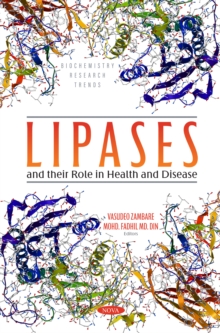
Alpha-Fetoprotein: Functions and Clinical Applications PDF
Edited by Nisha Lakhi
Part of the Biochemistry Research Trends series
Description
Alpha-fetoprotein (AFP) has many applications across various disciplines.
This oncofetal protein is routinely used by clinicians for antenatal testing as well for the screening and treatment monitoring of certain malignances.
Innovative research using AFP has also been very promising.
Recent developments include the use of AFP or its recombinant fragments for drug delivery to cancer cells, as well as for the engineering of cancer vaccines and T cell immunotherapies.
The anti-estrogenic potential of AFP has also been utilized to develop drugs directed against estrogen receptor positive malignancies.
This book is divided into five sections. In Section One, the history of AFP is recollected, and the role of AFP in normal and pathological conditions is explored.
Section Two and Three focus on the utility of AFP during pregnancy.
In Section Two, the use of routine maternal serum AFP screening for detection of chromosomal aneuploidies and neural tube defects in normal pregnancies and pregnancies with pre-existing disease is discussed; the potential use of AFP for the detection of preeclampsia is also reviewed.
Section Three explores the pathogenesis and data linking unexplained elevations of AFP to adverse obstetrical outcomes.
Section Four presents chapters that discuss AFP ligand binding, receptor targeting, and drug delivery strategies.
Finally, Section Five serves to explain the regulatory roles of AFP, its use in immunotherapy, and in the development of cancer vaccines.
The aim of this book is to bring together some of the great research and clinical insights that currently surround AFP.
The target audiences for this book are basic science researchers as well as clinicians.
Information
-
Download - Immediately Available
- Format:PDF
- Pages:420 pages
- Publisher:Nova Science Publishers, Inc.
- Publication Date:07/01/2019
- Category:
- ISBN:9781634849005
Information
-
Download - Immediately Available
- Format:PDF
- Pages:420 pages
- Publisher:Nova Science Publishers, Inc.
- Publication Date:07/01/2019
- Category:
- ISBN:9781634849005










